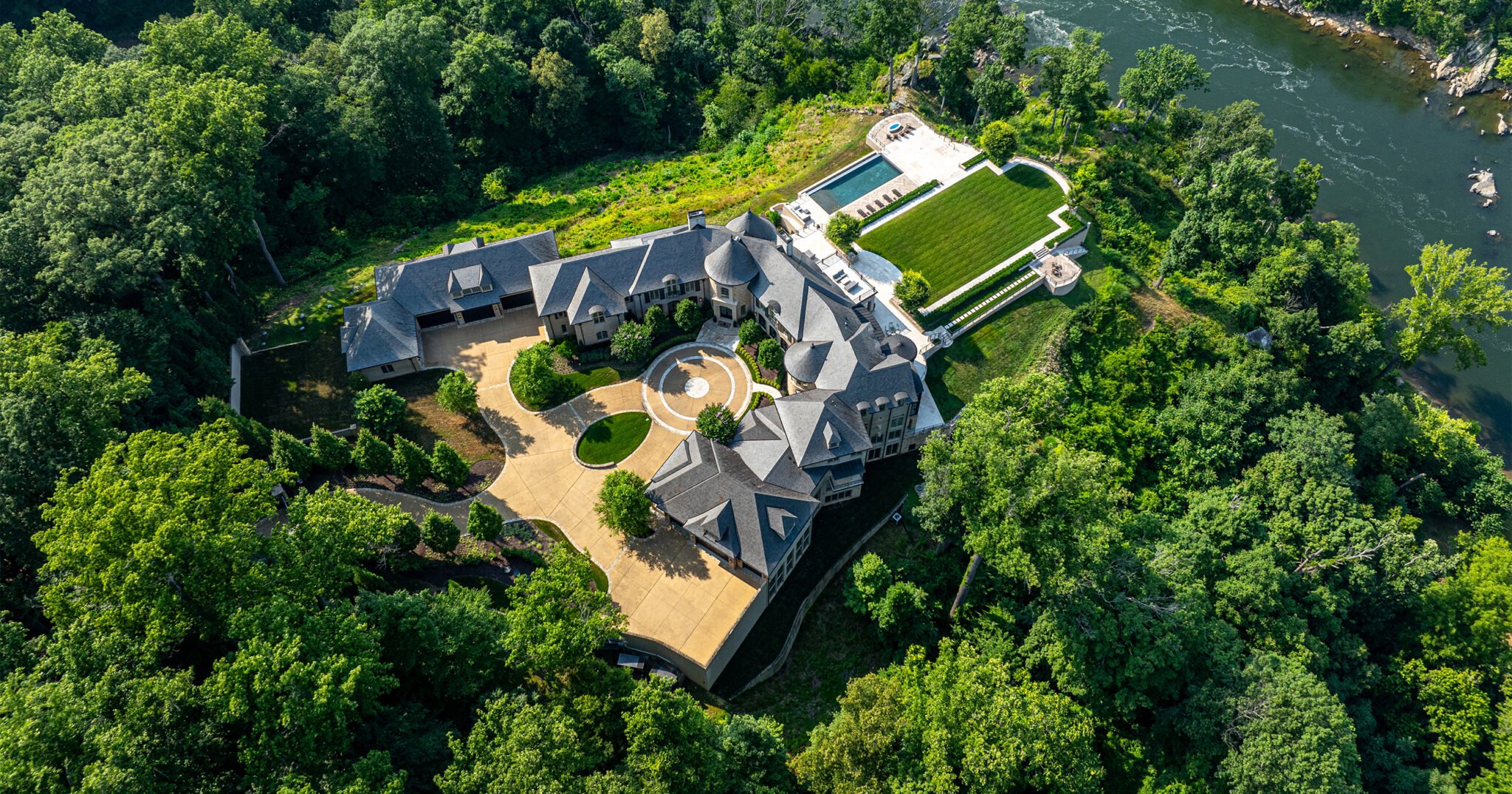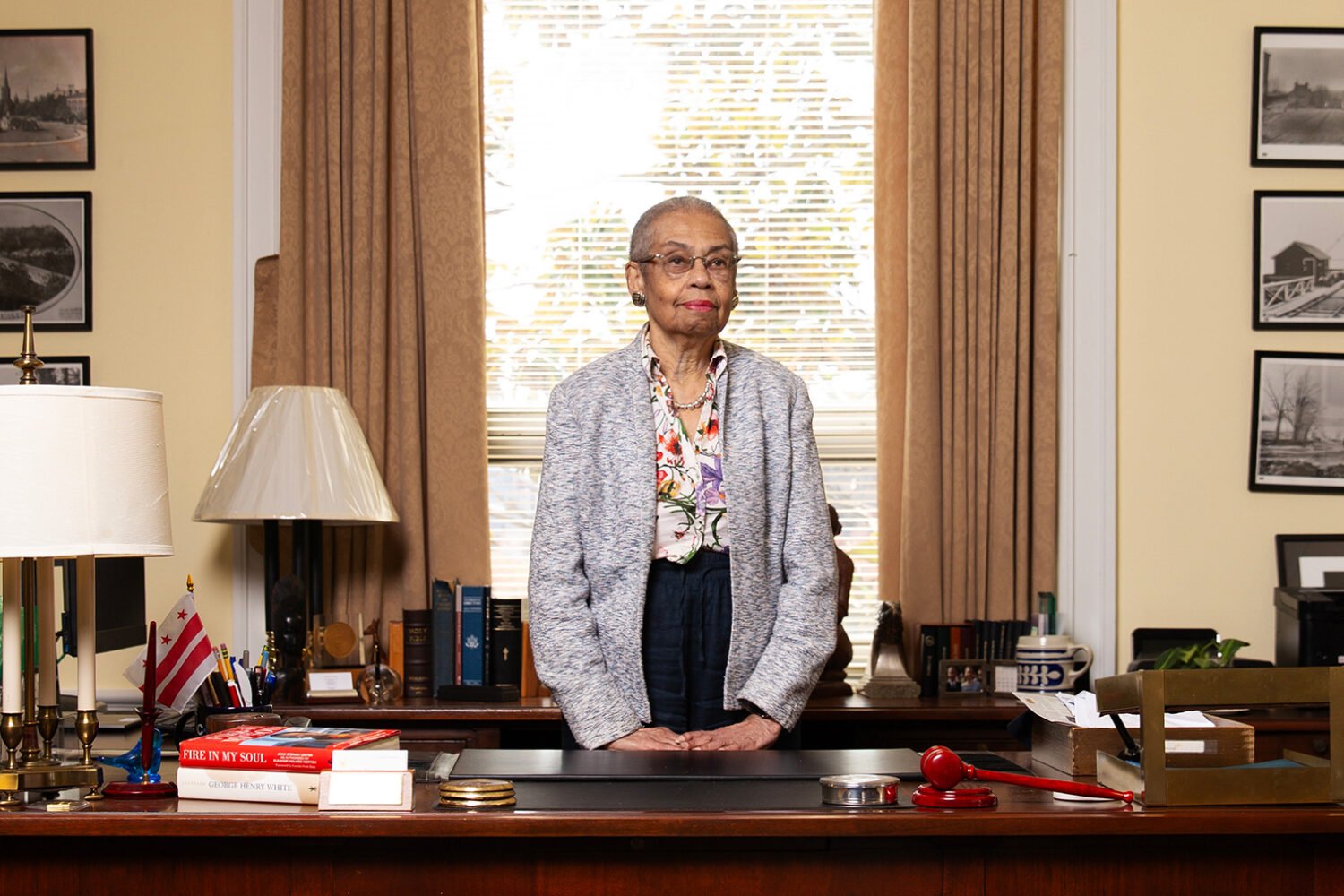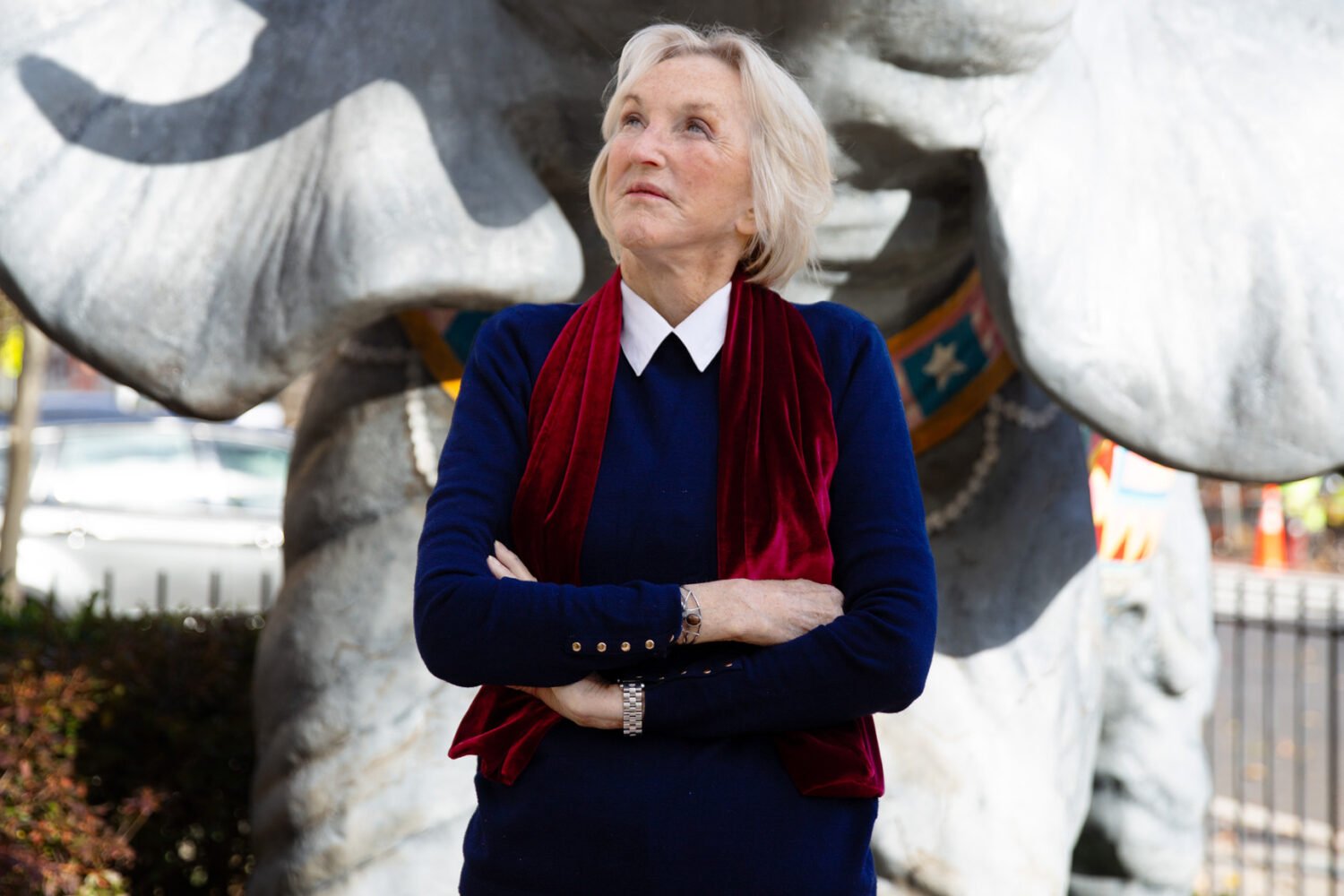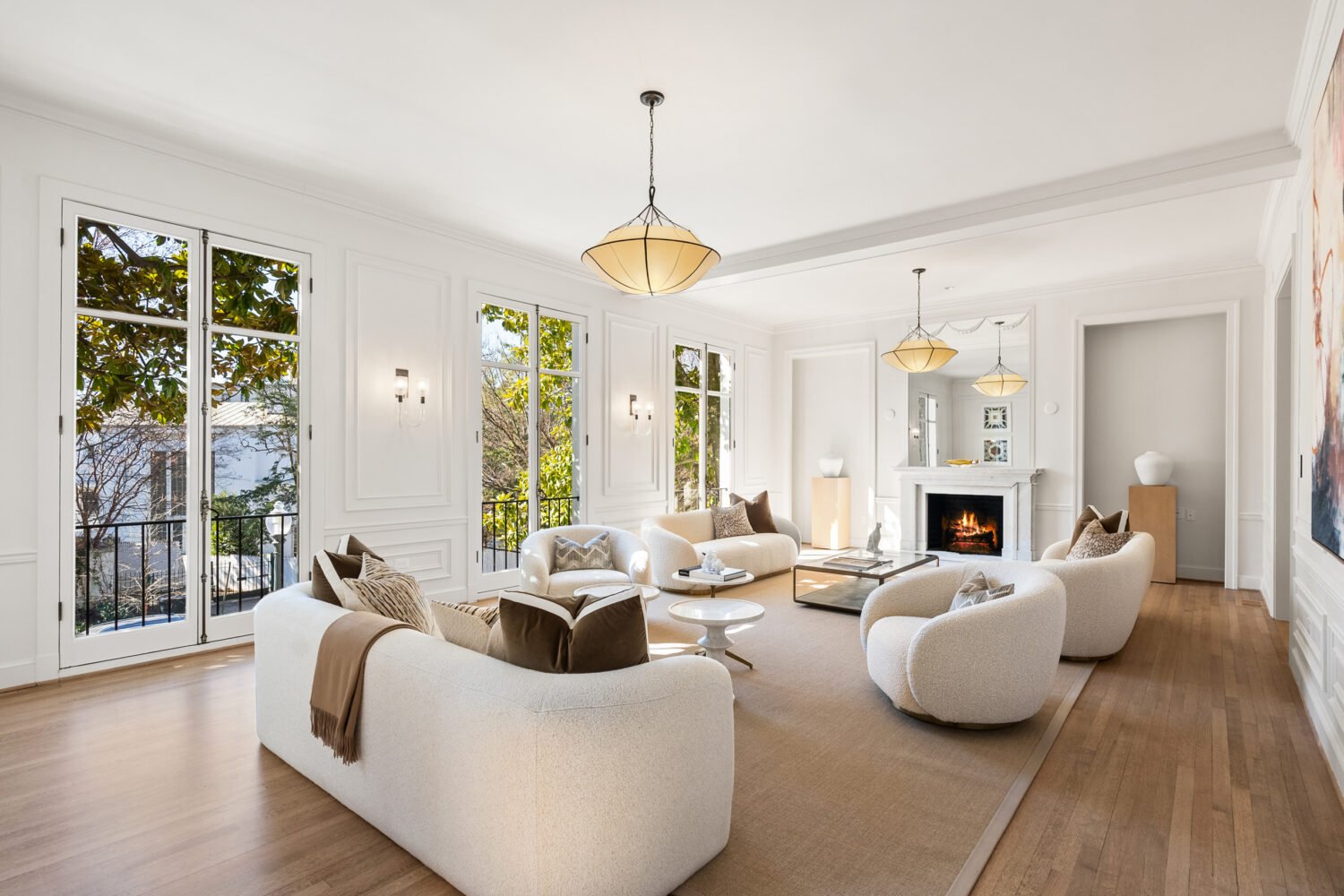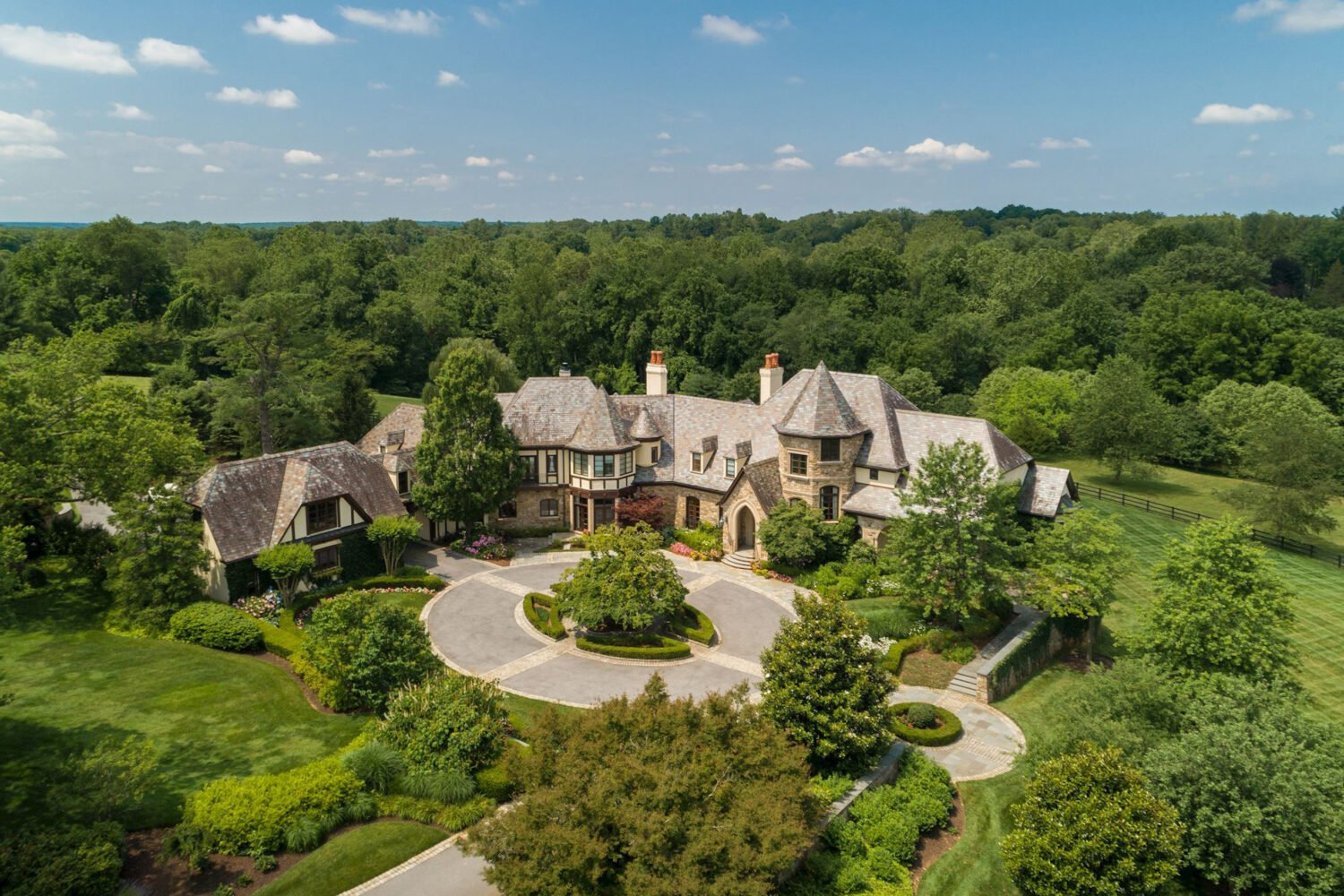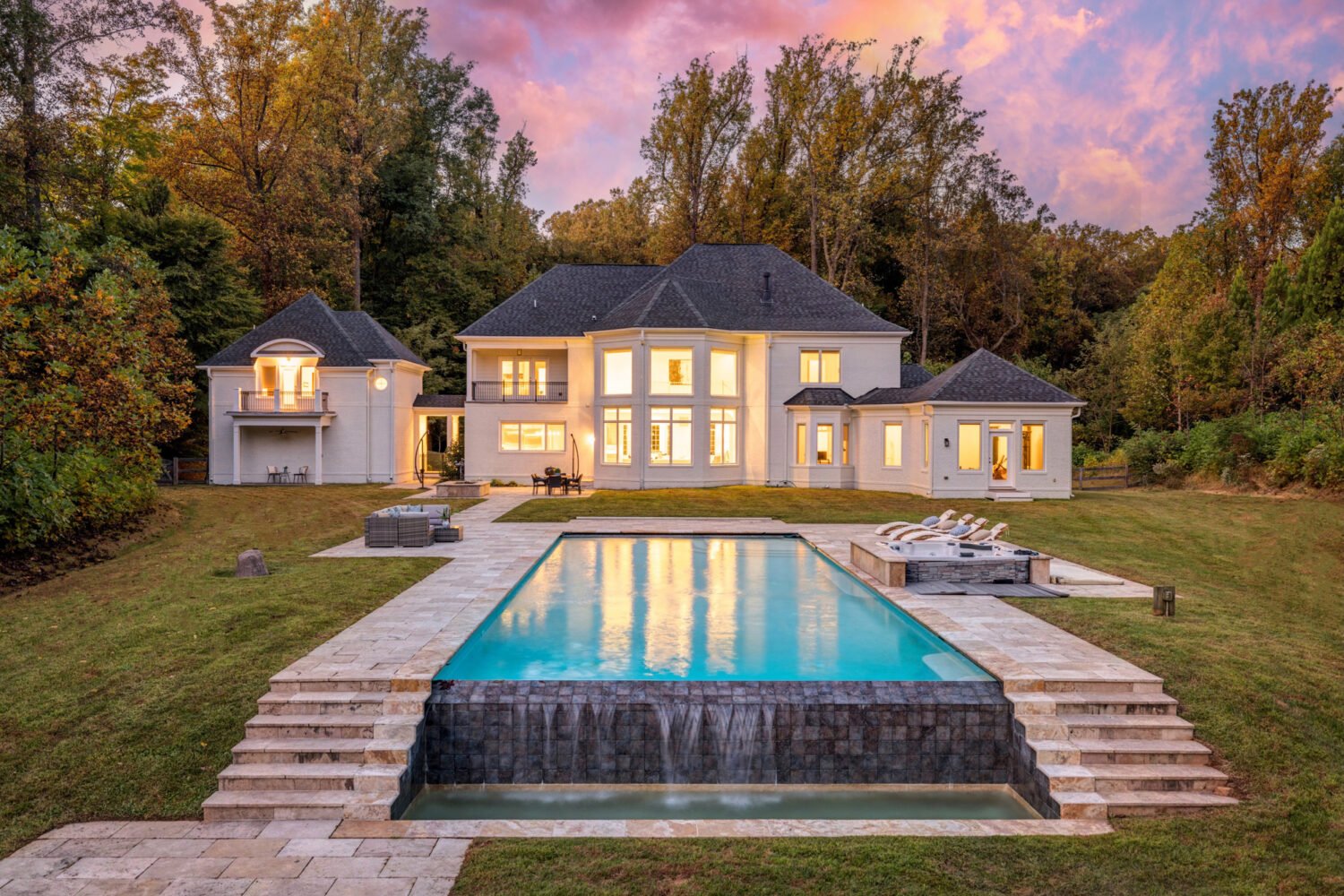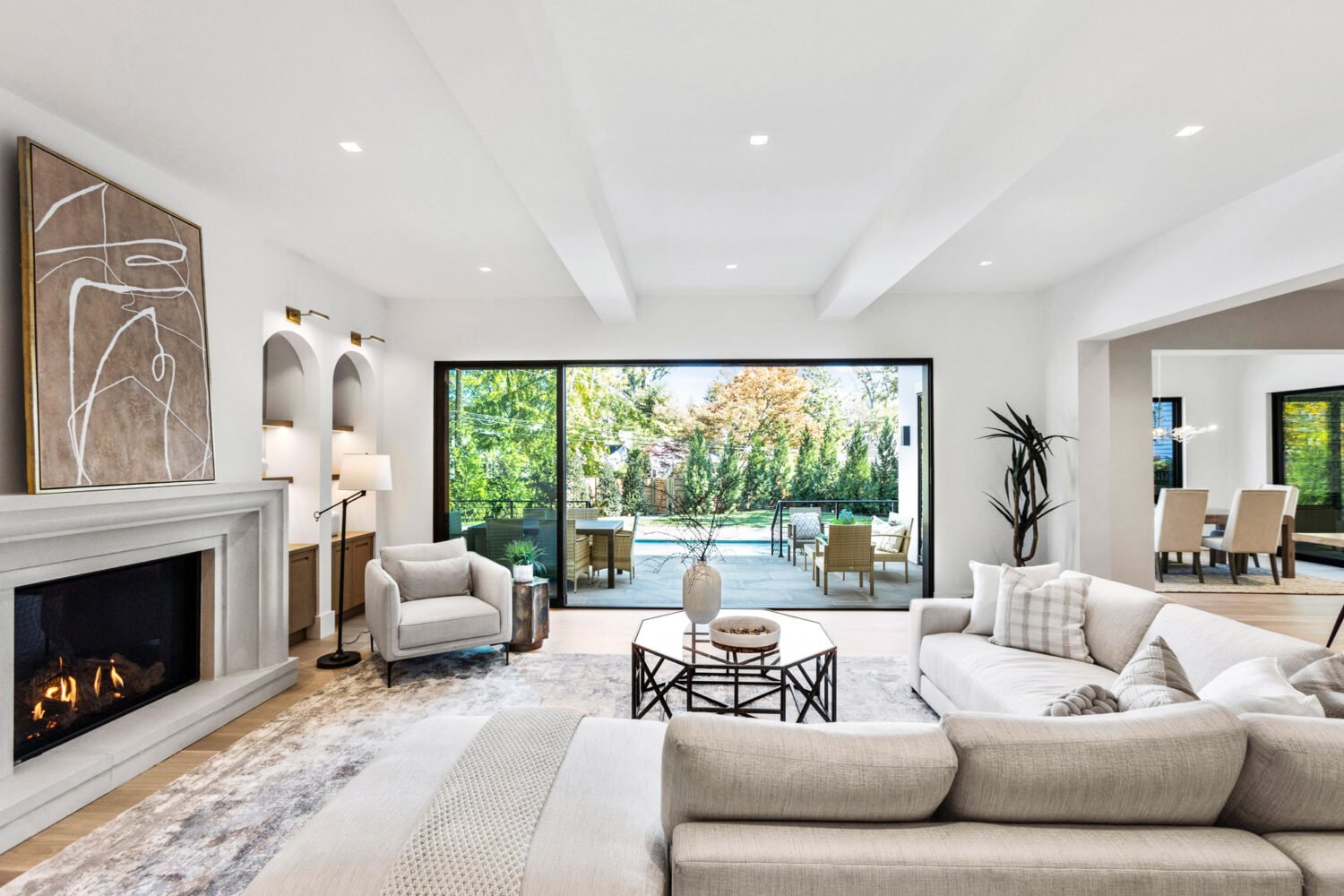Contents
- n early January, some of the region’s premier real-estate agents descended on a house in Chevy Chase. The group—they call themselves the Speakeasy Club, says Robert Hryniewicki, an agent with HRLS Partners at TTR Sotheby’s International Realty—had convened for lunch and bit of networking, a kind of high-powered luxury-market confab. At these invite-only gatherings, the lifetime sales represented by the attendees might number in the billions. The Chevy Chase house was for sale, listed at about $10 million, Hryniewicki recalls, and the assembled had come in part to get a tour and see if it might suit one of their clients. But the property wasn’t listed publicly in the MLS, the multiple-listing service, which feeds into Redfin and Zillow: the places where the mortals among us do our house-hunting and gawking. Rather, this was an off-market, or private, listing, part of a secretive submarket of DC-area real estate where prominent families, billionaires, powerbrokers, athletes, tech gurus, and other high-net-worth individuals may conduct their business.
- Deep Private
- Safe Space
- Gossip Pages
- Inside a Luxury Estate
- The Rise of the NDA
- LLCs and the Art of Closing
- Tips for selling
- Tips for Buying
n early January, some of the region’s premier real-estate agents descended on a house in Chevy Chase. The group—they call themselves the Speakeasy Club, says Robert Hryniewicki, an agent with HRLS Partners at TTR Sotheby’s International Realty—had convened for lunch and bit of networking, a kind of high-powered luxury-market confab. At these invite-only gatherings, the lifetime sales represented by the attendees might number in the billions. The Chevy Chase house was for sale, listed at about $10 million, Hryniewicki recalls, and the assembled had come in part to get a tour and see if it might suit one of their clients. But the property wasn’t listed publicly in the MLS, the multiple-listing service, which feeds into Redfin and Zillow: the places where the mortals among us do our house-hunting and gawking. Rather, this was an off-market, or private, listing, part of a secretive submarket of DC-area real estate where prominent families, billionaires, powerbrokers, athletes, tech gurus, and other high-net-worth individuals may conduct their business.
A pocket listing, as such a listing is often also called, might go up for sale without any public notice, and it might go under contract and sell just as quietly, the buyer’s identity shielded by an LLC or trust. A seller might not command the highest possible sales price with a private listing, but a more important consideration might be discretion—no open houses, no nosy neighbors, no public glimpse of the inner workings of their Washington life.
DC has always been a city where discretion and privacy are a cherished—and necessary—commodity. Pocket listings have a long history here. But the need for privacy has only seemed to grow more pressing. We live in an age of drones and smartphones, of TMZ and influencers looking to score a scoop. Maybe you want to shield the intimate details of your life, and that of your family, from prying eyes. Maybe you’re a professional athlete worried about a burglar targeting your house on game day or a politician worried about death threats. With the arrival of all the attendant billionaires and tech gurus during the second Trump administration, the luxury real-estate market has witnessed a surge in activity—the so-called Trump bump—which has helped spotlight the existence of this shadow submarket, where untold millions in deals might be shrouded in relative secrecy.
How can you create a zone of privacy around where you live? The question might apply equally to a victim of domestic violence; a journalist who worries about being doxxed; a CIA agent or therapist; a judge targeted during a RICO case; or someone who, for whatever reason, prioritizes anonymity. And it might apply not just to the sale of a property but to the renovation or construction of a new house, or to the design of a safe room (a.k.a. a panic room) or other security plan.
The vast majority of us will remain blissfully ignorant of these concerns. We’ll never ask an agent or architect to sign a nondisclosure agreement (see below for more on the rise of the real estate NDA). And we’ll list our properties in the MLS, as Hryniewicki almost always suggests, even to his luxury sellers. But in select instances, for a select individual, only a pocket listing will do.
Back to Top
Deep Private

There are pocket listings and then there are highly secretive ones. “We call it deep private,” says Hryniewicki, referring to a private listing with no public information at all: no photos, no address, no sign outside. The only people who know about the listing are the seller, the agency, and anyone the agency contacts.
Jim Bell, an executive vice president of TTR Sotheby’s International Realty, describes it this way: “Almost a complete communications and media blackout. The people you’re communicating with are on a need-to-know basis. And no social media.” The appeal of these listings can be their exclusivity, says Bell: “Privacy and discretion create value, because they’re limited—very limited—commodities.”
With a deep pocket listing, making a sale relies on the networking of agents who traffic in these exclusive circles. “We’re constantly texting with each other trying to match these private clients with the private listings,” says Bell. “It’s not just the person and the property—to make it all come together, you have to have the person get into the property.”
In this ultra-luxe bracket, the logistics require a certain finesse. How do you get someone who might be busy running a hedge fund or multinational company in another state into the house during their one available window that month? An ill-timed snowstorm can blow up a deal. Or a buyer might suddenly emerge the night before. “We might get notice at 9:30 pm that the buyer is available at 8 am to show,” says Hryniewicki. “They want to see the house at 8 am because nobody’s on the streets. It’s sometimes awkward timing, but that’s on purpose: to create a level of privacy.”
In some cases, an agent showing a property might request that the wi-fi be turned off to prevent a Nest doorbell or security camera from recording the potential buyers. That level of discretion can extend to financial disclosures. “Sometimes we get letters from bankers saying, ‘Hey, we’re not going to disclose who this individual is, but this LLC has access to so many million in liquid assets,’ ” one agent told us. Typically, the two parties in a transaction know who’s on the other side of the table, but there are exceptions. In 2023, Jeff Bezos purchased a house in Indian Creek Island—Florida’s so-called Billionaire’s Bunker—for $79 million, after the seller, businessman Leo Kryss, agreed to chop $6 million off the asking price. Kryss sued—the case was ongoing at press time—claiming he never would have agreed to the reduction had he known that the buyer was Bezos. And that the brokerage, which represented both him and the Amazon founder, had misled him about the buyer’s identity.
Last August, Bright MLS clarified the rules around pocket listings. Before, private was assumed to mean private. If an agent advertised a property publicly, they posted it online in the MLS. Now they can list privately (keeping the address under wraps, say) but also pursue a marketing campaign—for example, placing a story in the Wall Street Journal that targets a jet-setting buyer pool. Following the update, many agents have launched a section on their websites featuring pocket listings, including TTR Sotheby’s Daniel Heider, whose Heider Private offers up varying levels of detail for available properties—maybe an address and list price, or maybe just a general location and description. “I read the top sales of the year by various outlets,” says Heider, only to discover they’re missing some of the biggest transactions. “If you’re really in touch with what’s happening, you’re not just looking at the public market. You’re looking at the private market.”
Consider the following transactions. An eight-bedroom mansion on Woodland Drive, across from Peter Thiel’s DC house, sold in early January for $17.5 million. The deed recorded the buyer as Normanstone Holdings LLC, which had been incorporated in Delaware in December. And in early March, another private listing in the neighborhood closed for $23 million, this one purchased by Redbrick Corner, also an LLC registered in Delaware. The second property was blurred out on Google maps—something any homeowner can request. Brief stories appeared in the Washington Business Journal about each sale, but that was mostly it—two of the largest transactions of the year, unfolding not with a bang but a whimper, just as the buyers had intended.
Back to Top
Safe Space
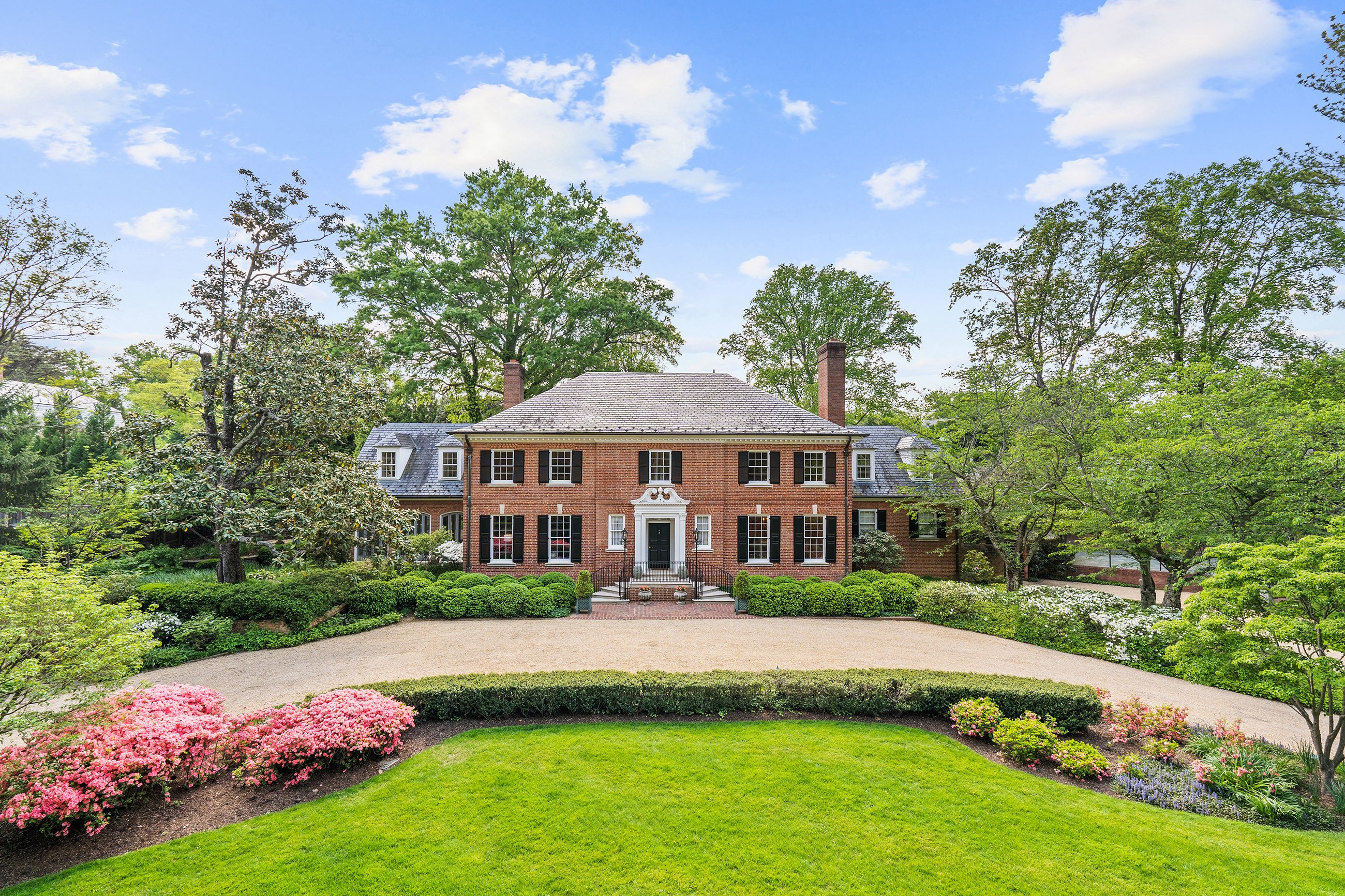
Closing a deal is one thing. But the question of privacy extends to the estate itself. Maybe the property already has a secluded feel, a security plan in place. Maybe it needs an upgrade. “When Steve Mnuchin was looking for houses during Trump [term] one, when he got confirmed to be Treasury Secretary, his main criterion was ‘I want a gated property,’ ” recalls Hryniewicki, whose firm helped Mnuchin land a $12.6 million walled estate in Massachusetts Avenue Heights. But for many luxe listings in the city, especially in Georgetown or Kalorama, little separates the front door from the street. Kalorama appeals to some buyers in part because of the concentration of high-profile people there, such as the Obamas: The Secret Service already has a presence in the neighborhood.
In some cases, clients are motivated more by privacy than security. DC landscape architect Richard Arentz is now finishing work on a garden in Georgetown where he had only about three feet of space along the edge to create a privacy screen. He planted 18-foot-tall magnolia virginiana Moonglows that will, over time, form an impenetrable shield. For clients wanting immediate cover, Arentz favors hollies—American hollies in shaded areas, Nellie Stevens hollies in full sun—to create what he calls “a dense-edge condition.” For those with the deepest pockets—the Bezoses of the world—the solution may be more definitive: Buy the adjoining property.
And for those with a private security or Secret Service detail, the designer may need to factor in a security plan. Considerations might include “access to the property, how we can control that access, what types of physical barriers can be put in place, what kinds of sensors, whether they are sound or motion,” says Joseph Richardson, a DC landscape architect. High-tech cameras can differentiate between a deer and a human, adds Tim Miller, CEO of the Gaithersburg security company Advanosys Security & Automation Technologies, and can alert an owner via text if a particular type of car pulls into the driveway—a black Mercedes, say. The security team might request that certain sightlines on the property be kept clear, possibly requiring regular pruning of trees or other plants, or adjusting the design to respect those corridors. “The protection and the privacy of the client is of the utmost importance, but they’re also coming to environments where they want to be able to relax and enjoy it with their friends and families,” says Richardson. “So they also don’t want it to feel like it’s a fortress.”
Security fencing can be swapped out for something more ornate or architecturally inspired if a perimeter detection system is in place, says Miller, who’s been in the business four decades and has done work for various embassies, government and corporate clients such as the US Coast Guard, and private individuals. For one of his projects, Miller says a client wanted a pair of ornate French entry doors outfitted with bulletproof glass. He found a manufacturer in Lithuania who created an exact replica of the door with the requisite glass, painted the molding with gold leaf, and on either side of the door added a long section of Kevlar ballistic material behind the drywall, safeguarding the entrance.
Which brings us to the safe room, or as some call it, the panic room. According to a recent report by the market-research company Valuates, safe rooms will be a billion-dollar industry globally by 2030. And while that includes the commercial and government sectors, the safe room has trickled into the residential mainstream—even some middle-class families are adding one to their homes. Ellen Hatton, a principal at BarnesVanze Architects, rattles off the features of the typical one, a place where the homeowners can retreat in case of an imminent threat: “Steel doors. Ballistic walls. If there’s a window, a ballistic window. Separate mechanical systems.”
Designing a safe room requires balancing a few key factors: the severity of the threat, the homeowner’s budget, and the house’s layout, says Miller. Essentials include a battery backup and generator, an “intrusion-duress activation system,” and most important, a secure connection to the monitoring station. Wealthy clients facing a credible threat might have multiple such rooms, Miller says, and store valuable possessions there, such as a collection of Rolexes. Most common, Miller says, is to fashion one in a room or closet off the bedroom. One of Miller’s clients transformed an entire primary suite into a safe room—which would surprise anyone standing in the space, because the design’s artful execution makes it all but invisible.
Back to Top
Gossip Pages
And yet for all the effort devoted to veiling a property under a shroud of privacy and security, word often leaks. “I’ve closed deals, even recently, that, before our deed was submitted for recording, the information was out,” says Rob Rothstein, president of Paragon Title. Maybe the neighbors, or someone on the far fringes of the deal who hadn’t signed an NDA, blabbed. Perhaps a journalist got tipped off by a source. An entire media ecosystem is dedicated to reporting on the estates of the rich and famous.
“The only thing we can’t control is public record,” says Michael Patrick, a principal at BarnesVanze. A few years back, when the firm transformed the old Textile Museum in Kalorama into Bezos’s house, an enterprising writer from this magazine went to the city, pulled the permit drawings, and published them. But unless you’ve attended a soiree at the house, or studied the Instagram of Lauren Sánchez, Bezos’s fiancée, for clues, the interior remains a mystery. “You have these large gaps in your résumé and it’s like, what have you guys been doing?” says Wayne Adams, a principal at BarnesVanze. “Our most spectacular projects are never going to be shared.
Back to Top
Inside a Luxury Estate
How privacy, security, and luxe trappings (cigar lounge, anyone?) come together in one swank space

Super Suite
Primary bedrooms might house “impressive sitting areas, blackout sleeping chambers, hidden refreshment closets, separate his-and-her dressing rooms outfitted with made-to-measure wardrobe compartments,” says DC interior designer Darryl Carter. Oh, and fireplaces near the en suite soaking tub.
Shelter in Place
The safe room, or panic room, where a family can retreat in case of an immediate threat, will often be located in the bedroom. Think ballistic walls, windows, and door. The entry itself can be camouflaged, and the safe room can double as storage for valuables–cash, jewelry–or firearms.
Twice Baked
Some luxe properties boast both a show kitchen, where the family might gather for breakfast or congregate with friends, and a galley or secondary kitchen, where they can hide their dirty dishes, a chef can prepare a meal, or the kids can gather if the adults are enjoying cocktail hour.
Luxe Is In The Details
Apart from the expected high-end amenities–elevators, multiple-car garages, pool houses–many ultra-luxe estates also include an array of smaller features attuned to the owner’s whims: dog or pet showers, luggage storage, closets arranged by season, and watch safes with a winding function.
After Hours
For movie nights, families might retire to the home theater or the wine or cigar lounge. Or, as designer Darryl Carter says, maybe even a “barrel-vaulted winetasting room” on the lower level of a house.
Mirror Effect
Depending on the threat level, a homeowner might install windows that are both bulletproof and reflective, to address privacy and security. Other measures could include cameras and sound sensors as well as a security gate–which might be hidden around the corner from a more attractive main entrance gate.
Driving Double
Some estates will have separate driveways–one for the homeowners and one for the staff and workers (gardeners and landscapers, for instance) plus any other visitors. For high-profile types who value privacy, the landscaping plan might maintain those separate zones with the use of plants, planters, or decorative screens made of metal or lattice, giving the owner and family a sense of seclusion.
Driving Double
Some estates will have separate driveways–one for the homeowners and one for the staff and workers (gardeners and landscapers, for instance) plus any other visitors. For high-profile types who value privacy, the landscaping plan might maintain those separate zones with the use of plants, planters, or decorative screens made of metal or lattice, giving the owner and family a sense of seclusion.
Driving Double
Some estates will have separate driveways–one for the homeowners and one for the staff and workers (gardeners and landscapers, for instance) plus any other visitors. For high-profile types who value privacy, the landscaping plan might maintain those separate zones with the use of plants, planters, or decorative screens made of metal or lattice, giving the owner and family a sense of seclusion.
Gamesmanship
Putting greens; tennis, basketball, and racquetball courts; swimming pools; bowling alleys; exercise or weight rooms; indoor golf simulators–many high-end estates boast more than a few sporting amenities. For recovery, there might be a spa with a hydrotherapy bath, steam showers, and a sauna, or a meditation room.
Security Screen
The layering of deciduous and evergreen trees and other plants can help create a privacy screen around a property and soften or hide security features. Cameras or security staff might require certain views, necessitating the regular pruning of some plants or trees.
1. Super Suite
Primary bedrooms might house “impressive sitting areas, blackout sleeping chambers, hidden refreshment closets, separate his-and-her dressing rooms outfitted with made-to-measure wardrobe compartments,” says DC interior designer Darryl Carter. Oh, and fireplaces near the en suite soaking tub.
2. Shelter in Place
The safe room, or panic room, where a family can retreat in case of an immediate threat, will often be located in the bedroom. Think ballistic walls, windows, and door. The entry itself can be camouflaged, and the safe room can double as storage for valuables–cash, jewelry–or firearms.
3. Twice Baked
Some luxe properties boast both a show kitchen, where the family might gather for breakfast or congregate with friends, and a galley or secondary kitchen, where they can hide their dirty dishes, a chef can prepare a meal, or the kids can gather if the adults are enjoying cocktail hour.
4. Luxe Is In The Details
Apart from the expected high-end amenities–elevators, multiple-car garages, pool houses–many ultra-luxe estates also include an array of smaller features attuned to the owner’s whims: dog or pet showers, luggage storage, closets arranged by season, and watch safes with a winding function.
5. After Hours
For movie nights, families might retire to the home theater or the wine or cigar lounge. Or, as designer Darryl Carter says, maybe even a “barrel-vaulted winetasting room” on the lower level of a house.
6. Mirror Effect
Depending on the threat level, a homeowner might install windows that are both bulletproof and reflective, to address privacy and security. Other measures could include cameras and sound sensors as well as a security gate–which might be hidden around the corner from a more attractive main entrance gate.
7. Driving Double
Some estates will have separate driveways–one for the homeowners and one for the staff and workers (gardeners and landscapers, for instance) plus any other visitors. For high-profile types who value privacy, the landscaping plan might maintain those separate zones with the use of plants, planters, or decorative screens made of metal or lattice, giving the owner and family a sense of seclusion.
8. Gamesmanship
Putting greens; tennis, basketball, and racquetball courts; swimming pools; bowling alleys; exercise or weight rooms; indoor golf simulators–many high-end estates boast more than a few sporting amenities. For recovery, there might be a spa with a hydrotherapy bath, steam showers, and a sauna, or a meditation room.
9. Security Screen
The layering of deciduous and evergreen trees and other plants can help create a privacy screen around a property and soften or hide security features. Cameras or security staff might require certain views, necessitating the regular pruning of some plants or trees.
Back to Top
The Rise of the NDA

The nondisclosure agreement–or NDA–is, as New York magazine recently dubbed it, the defining legal document of our time. And signing one has become more common in real estate and home construction, too, whether you’re an agent, an interior designer, or a builder. Sometimes blanket NDA language prohibiting photographs or the sharing of information needs to be tweaked–after all, if you’re an architect, how can you generate a proposal without snapping a few pics of the site and discussing the specifics with other members of the design team? But for most professionals working in these rarefied circles, discretion is already a core principle of their business. “You’re engaging with folks in intimate settings, in their personal homes,” says landscape architect Joseph Richardson. “Once you get a reputation for not maintaining your clients’ privacy, it’s a death sentence.”
It may not just be the real estate agent or designer signing an NDA but everyone involved with a house sale or a project–the mason, electrician, termite inspector, closing attorney. On a construction site, as a house nears completion, a no-phone rule might be imposed to prevent pictures. And after the project is completed, the client may request that a firm destroy all relevant photographs and files. When it’s still working on the drawings, the DC firm BarnesVanze Architects will label them using the client’s LLC, if there is one, and keep any labels or details to a minimum. Even in the privacy of its office, the firm will refer to a project using the LLC name–an added safeguard that ensures discretion.
Back to Top
LLCs and the Art of Closing
Rob Rothstein, the president of Paragon Title, has helped many people over the years create secrecy around their purchase of a property. “It’s been high-net-worth individuals,” he says, though that’s not all. “It’s been business owners, doctors, government officials, journalists, CIA agents, victims of domestic abuse or stalking.”
Typically, clients use an LLC or trust to record the sale. But recently, he’s been advising certain individuals to reconsider an LLC, or limited-liability corporation, which does in fact provide liability protection but may not always guarantee a buyer anonymity.
Creating an LLC requires making state filings that can be easily accessible online, and a small misstep on the paperwork can help reveal someone’s identity–for example, if they use an address that can be linked to another company with a known individual behind it. A trust, on the other hand, is a private agreement that isn’t publicly recorded. Another privacy tactic: an all-cash purchase, meaning no loan documents need to be signed.
Because of money laundering and other illicit concerns, the federal government has started giving all-cash sales more scrutiny. Since 2022, the Financial Crimes Enforcement Network (FinCEN), which is part of the US Treasury, has issued a series of Geographic Targeting Orders requiring title-insurance companies to report all transactions over $300,000 in DC and most of the surrounding counties in Maryland and Virginia–if the property is purchased by a business entity without financing–and share the identity of the primary individual behind that entity.
One thing every transaction has in common is that a deed of sale must be filed with the local municipality that makes public the individual, LLC, or trust that purchased the property. Rothstein knows of only one exception: Maryland offers a Safe at Home Address Confidentiality Program for victims of domestic violence or human trafficking, or for a parent or guardian who fears for the safety of a child or disabled person. If those individuals demonstrate a credible threat, the state will shield access to their property records.
Tips for selling
Does your property feel a little dated? Here are ideas for adding some luxe upgrades—and taking home a bigger offer.
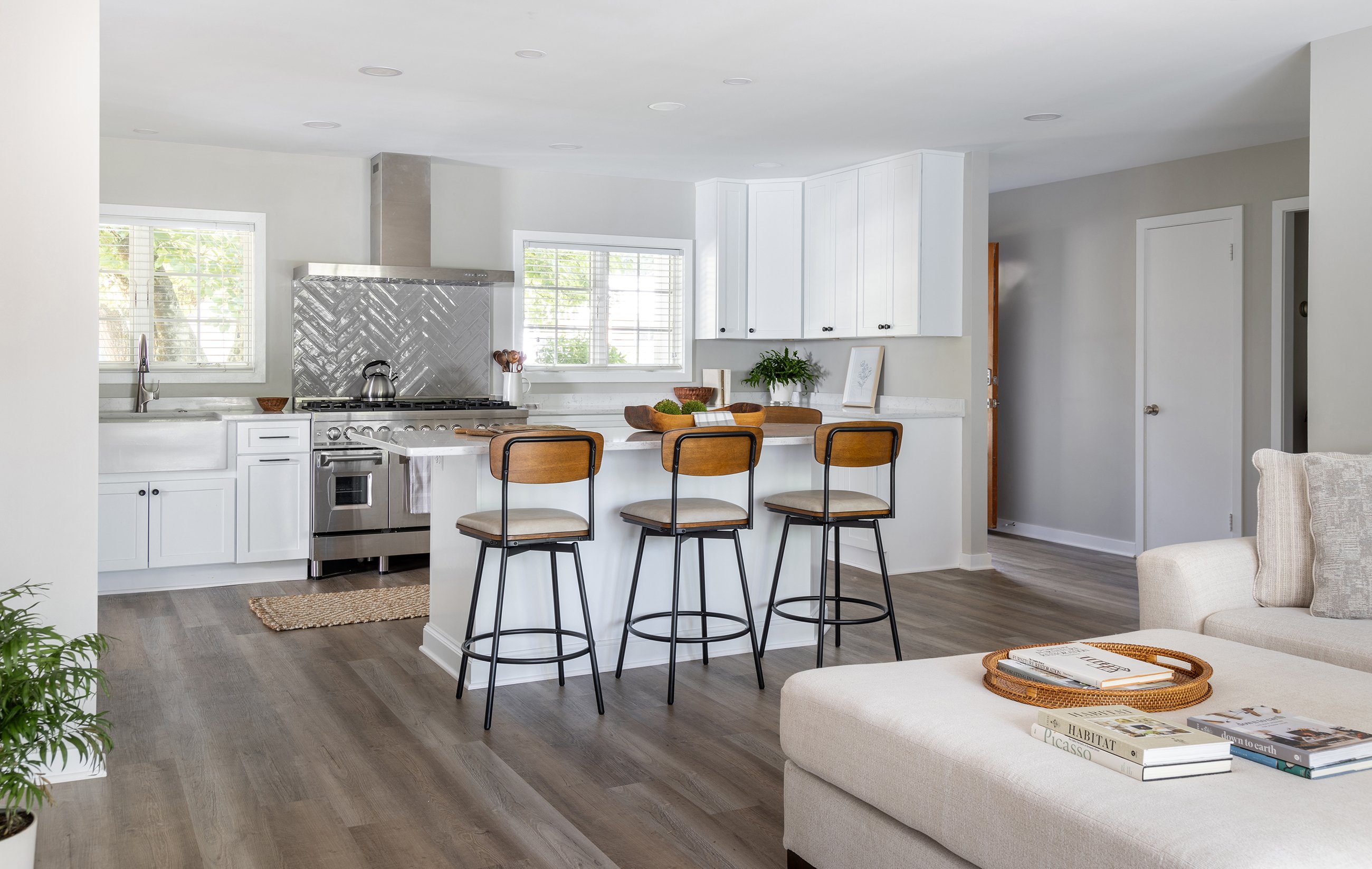
Stage Presence
Good staging not only can help focus attention on your home’s defining features, says Chad Arsenault, owner and principal of Interior Evolution Home Design in DC. It also can produce a big return. According to the Real Estate Staging Association, staged homes sell for 5 to 15 percent more, on average, and up to three times faster. “An approximately 1-to-1.5-percent staging investment,” Arsenault says, based on the anticipated sales price, “can yield a 5-to-15-percent return.” Here are a few tips.
Furniture Swap
If your furniture is dated, you can rent upscale pieces for staging, suggests Elisa Binger, an interior-design assistant with Anthony Wilder Design/Build in Cabin John. But Arsenault cautions against matching groups, which can “siphon the personality right out of a room.” Instead, he says, layering textiles and hues can enhance a sense of luxury. Mary Gordon, vice president of InSite Builders & Remodeling in Bethesda, recommends cashmere throws and oversize pillows in a neutral palette with warm brass or polished-nickel accents.
Color Coordination
Sammy van Blommestein, co-owner of Boxwood Home Staging in McLean, suggests “color drenching”: “Use the same color paint for the trim, baseboards, walls, crown moldings, and ceilings, using different sheens to add contrast.” Not only can it add drama to a space, she says, but it can make it feel larger.
Artful Finishes
Even small, inexpensive touches, such as aspirational coffee-table books or white tulips in glass vases, can make a space feel more sophisticated, says Gordon: “Art is essential. Create a black-and-white gallery wall, hang bold mirrors to reflect light, and incorporate modern abstract pieces. In the kitchen, style open shelves with decanters, ceramics, and cookbooks. A coffee station with an espresso machine and coffee cups on a sleek tray gives a boutique-hotel feel.”
Weekend Update
Even small renovation projects can transform the feel of a house, generating a higher sales price. Something as simple as “a subtle, neutral wallpaper in a powder room [can] add a layer of sophistication,” says Anthony Salinas, an agent with TTR Sotheby’s International Realty in DC. Here are more tips.
Switch Out Fixtures
“Upgrading faucets, door handles, or swapping out hardware on cabinets can update a bathroom or kitchen without the cost of a full remodel,” says Michael Winn, president of Winn Design + Build in McLean. “Replace dated light fixtures with sculptural designer lighting to create an instant focal point.”
Kitchen Refresh
Corey Burr, a TTR Sotheby’s agent in DC, suggests focusing on the kitchen. “Invest in one or two eye-catching features, such as a dual-fuel range with a gas stove and an electric oven, or a Sub-Zero refrigerator. If you don’t want to spend that much, a built-in coffee/espresso maker is an option, along with replacing the counters.”
Upgrading the backsplash can also give a kitchen a high-end feel, Salinas says.
Curb Appeal
Luke Olson, principal of GTM Architects in Bethesda, recommends exterior upgrades. “Updating wall sconces and adding seasonal landscaping and a nice front walk with path lights leading to the entry add curb appeal with a good ROI,” or return on investment, he says. “Also consider adding a porch or portico at the front door for a welcoming entry, along with new shutters and hardware.”
One of the biggest producers of ROI, according to a study by the Journal of Light Construction: a new front door. Either that or “a coat of bold paint on the door dramatically boosts curb appeal,” Winn says. “Adding stylish hardware and planters can also signal a ‘luxury’ impression.”
Social Appeal
The rise of social media has unlocked a new frontier for real-estate advertising, and Daniel Heider of TTR Sotheby’s International Realty has capitalized on it, amassing more than 4 million followers across TikTok, Instagram, and Youtube. “It moves the needle, in our experience,” he says. “That’s why we’re so heavily invested in producing this content.” Here are some of his tips for making your property pop on social media.
Choose an internet-savvy real-estate firm.
“If you’re selling a house in 2025 and your agent isn’t talking about what their social strategy is and how they’re using modern technology to target the right audience, you’re missing out,” says Heider.
Go big with your content.
Heider describes real-estate marketing as a “popularity contest”—if your content is bold enough, it can garner a sale. A flashy video Heider posted last year of an estate in Great Falls caught the attention of a professional athlete, who had already gone under contract on another property in the area. “He got out of that contract because he saw the video of the property that we were advertising, and bought that house for full list price in cash,” says Heider.
Don’t rule out targeted ads.
Last year, Heider’s team closed a $12 million deal on a house in Cecilia’s Point on the Eastern Shore. What led to the deal? A targeted ad on social media directed at potential buyers that reached the eventual purchaser in Delaware.
Don’t stop at social media.
If an Instagram reel of your property gets lots of views, you might think that’s good enough, but it’s not, Heider says. Old-school marketing still has a place in this market. “So it’s mailers, it’s print ads, it’s social media, it’s events,” he says. “We’re working hard to make sure that our listings are always out there.”
Tips for Buying
If you’re looking to purchase a home this year, here are a few tips to help navigate a market where cash has been king. Plus, how recent rules changes around commissions may affect your bottom line.
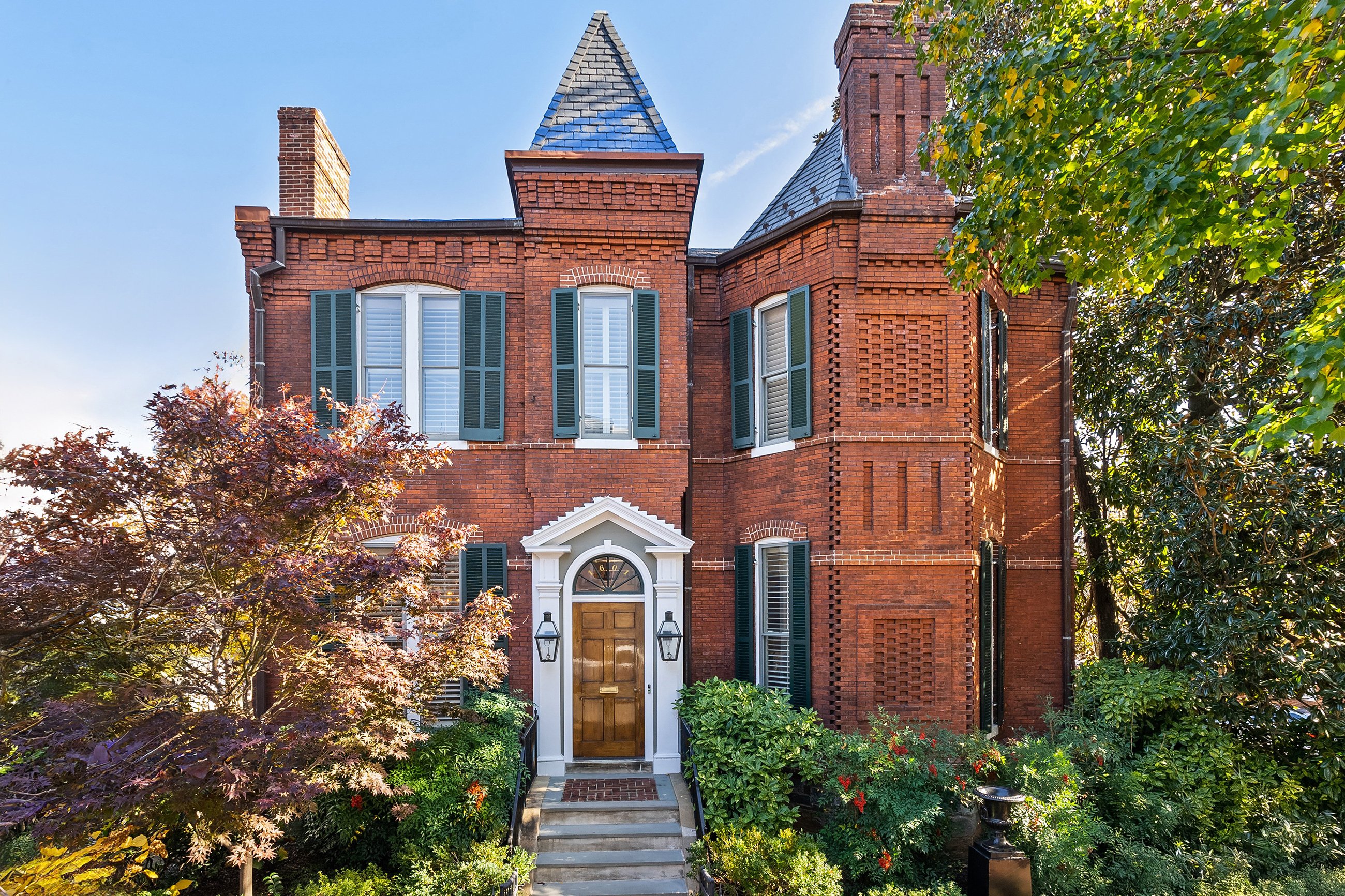
Change of Commission
If you haven’t bought a home in a while, you may be unaware of recent rule changes around real-estate commissions, which can, in rare cases, have a big impact on your budget.
In the old days, the seller typically paid the commission for the buyer’s agent–usually between 2.5 and 3 percent–and what the seller was offering was disclosed in the MLS listing. But as of last year, as part of an agreement that the National Association of Realtors reached following a class-action lawsuit, sellers can no longer include in the listing the compensation they’re offering, if any. And the buyer, before seeing any properties, must sign an agreement with their agent or brokerage that specifies their commission. At the time, the question was whether sellers would stop offering to pay the buyer’s agent, forcing the buyer to pony up.
The answer so far appears to be no. “I would say, substantially, nothing has changed,” says Matt Cheney, a VP at Compass. The buyer’s agent can call the listing agent to learn how much compensation they’re offering. But Cheney says he’s seen just one case since the settlement in which a seller offered only a partial commission, and during the ensuing negotiations they agreed to pay the full amount. Also practically unchanged: the average amount of the buyer’s commission since the new rules were adopted last August.
A few subtle differences are worth noting as a buyer. For one thing, because you’ll need to sign a buyer/agent agreement before touring a house, it’s worth doing some extra vetting of your agent, if you haven’t worked with the person before, to make sure they’re a good fit.
And there should be a straightforward discussion about payment at the start. “It’s going to be up to you to pay me a commission” is what Roby Thompson, an agent with Long & Foster, tells his clients. Though, like Cheney, he says that in every case except one, the seller has agreed to cover his end. “You can always write a contract on a listing with the seller paying the commission, and if they won’t agree to it, then you need to inform your client that they’re going to have to come up with it, or they’ll want to move on,” Thompson says. “It’s about being transparent with people and explaining the process upfront.”
Competing Against Cash
Last year, more than 25 percent of home purchases in the District, and about 19 percent in the region, were all-cash. How can those of us without deep pockets compete? Here’s advice for how to make your offer stand out.
Skip the Love Letter
Historically, buyers in hot markets have tried endearing themselves to sellers by submitting personal notes about why they want to purchase the house. But agents generally advise against the practice: If the letters reveal identifying information about the potential buyers–nationality, ethnicity, or religion, for example–the sellers may unknowingly violate fair-housing laws.
Add an Escalation Clause
Such clauses are one way to compete with an all-cash offer, says Roby Thompson, an agent with Long & Foster. The clauses, which he likens to the “eBay of real estate,” escalate your offer by a specified amount, up to a certain cap, if a competing buyer submits a higher offer. If your competitor is paying in cash, be prepared to go well above their offer–about 2 percent more than the home’s total price. So for a $1.5 million listing, expect to pay an additional $30,000, says Thompson: “You need to dangle the bigger carrot in front of the seller.”
Waive Everything
If you’re bidding against an all-cash offer, you’ll likely have to forgo any contract contingencies–an appraisal, say, or home inspection. “Waiving everything is necessary to compete in nearly every case,” according to Thompson.
Lower Your Budget
Thompson has had clients “lose three, four, or five times” against all-cash offers during their house hunts. Some get so disillusioned with the process that they decide to rent. If you find yourself repeatedly losing out, consider lowering your budget. With pricier listings, the likelihood that a competing buyer will make an all-cash offer “gets higher and higher,” Thompson says.
Photograph of NDA by Getty Images.
Most of this article appears in the April 2025 issue of Washingtonian.
